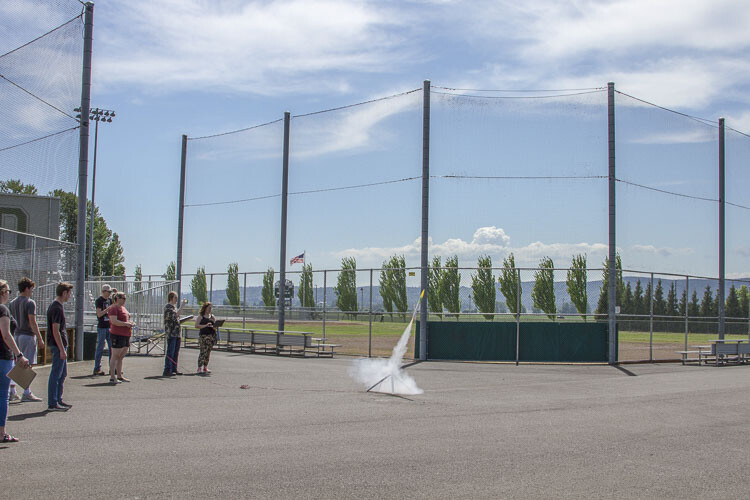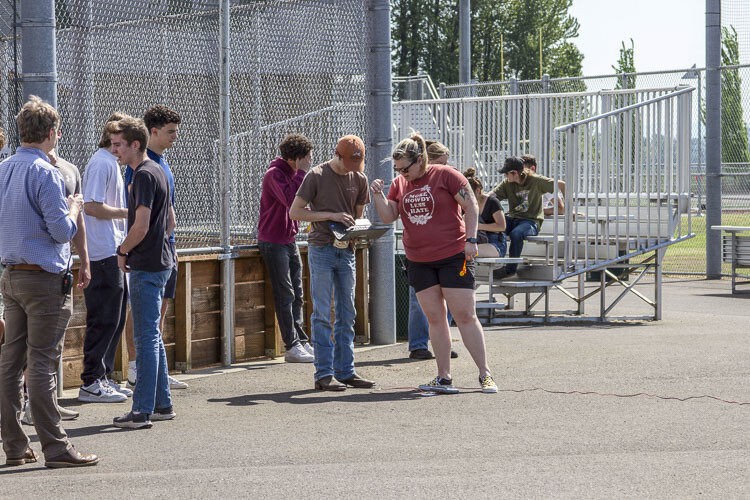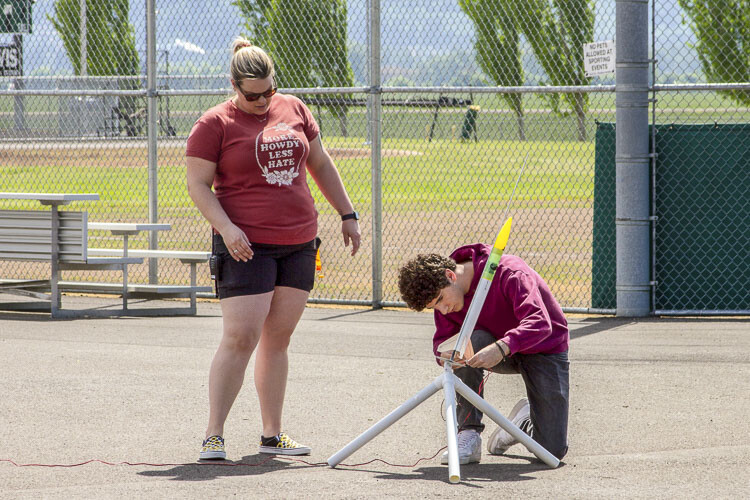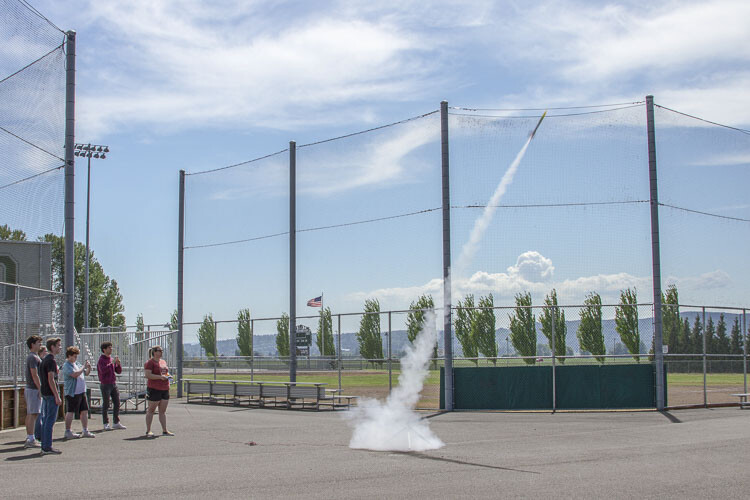
Applied Math takes concepts students learn in Algebra and Geometry and uses hands-on real-world experiments to take those concepts into reality
Math teachers at Woodland High School use innovative hands-on experiments to engage students and enhance learning. Applied Math, a class that goes beyond traditional math instruction, continues to gain recognition for its ability to bridge the gap between theoretical concepts and real-world applications. Through hands-on experiments and practical projects, high school students enrolled in Applied Math explore mathematical principles in a tangible and engaging way.
Applied Math takes concepts students learn in Algebra and Geometry and uses hands-on real-world experiments to take those concepts into reality.

“Applied Math provides the ‘why’ to back up the equations and concepts students have learned in prior years,” said Jennifer Benedict, a math teacher at WHS. “The chance to see principles in action makes concrete connections to concepts that may have been abstract prior to the hands-on experiment.”
For each project, students write reflections where they address the mathematical principles and concepts they observed.
“These reflections provide students the opportunity to practice math literacy as well as math writing skills,” said Benedict. “Students practice data analysis and interrupt patterns that may happen between testing and data collection.”
Throughout a given semester, the projects take students through the engineering design cycle. Since Applied Math also gives students a Career and Technical Education (CTE) credit, guest speakers help connect students with actual industry standards with many engineers from a variety of backgrounds presenting and speaking throughout the year.
“Applied Math stems from three major sources: Engineering 100 and 101 courses write for the Air Force Academy, a robotics section developed alongside one of my contacts from NASA’s Jet Propulsion Laboratory, and content from my own experiences where I worked with projects I want to pass on to future students,” said Benedict. “The collaboration with all of my sources has been instrumental to the success I’ve had with this class as my contacts help me deepen my engineering knowledge so I can better-share the concepts with students.”

Applied Math caters to a wide spectrum of student backgrounds. The course’s adaptability allows teachers to meet students where they are, enabling personalized instruction and support. This inclusivity fosters an environment where students can thrive, regardless of their mathematical abilities, prior knowledge, or individual learning styles.
“Applied Math allows for adaptation to meet each student where they are in the process of learning,” said Benedict. “I have provided modifications for students with special needs, while also elevating the math for students who are co-enrolled in calculus.”
The decision to become a math teacher is often rooted in personal experiences and influences. For Benedict, her own teachers and family influenced her decision.

“For me, it was a case of nature and nurture as my parents are an engineer and an accountant; the love for school and STEM subjects was passed on to me,” she said. “I was also lucky to grow up in a school system that allowed great teachers to be great; this resulted in me wanting to be a teacher for my whole life, and Applied Math gives me the chance to help pass on my excitement for learning and to encourage curiosity in my students.”
Learn more about how Woodland Public Schools educates students and serves the community by visiting the dedicated news webpage at www.woodlandschools.org/news/wsd
Information provided by Woodland School District.
Also read:
- Verizon-Cellular Plus giving away free backpacksVerizon-Cellular Plus in Clark County will be giving away free backpacks filled with school supplies on Saturday (July 27) from 10 a.m. to noon.
- Washougal High School earns 2024 Jostens Gold Tier School of Distinction AwardLast week, Washougal High School (WHS) student leaders were recognized with the 2024 Jostens Gold Tier School of Distinction Award for their work to improve school climate and culture.
- Journey Theater getting ready to present ‘The Music Man’Local theater group will have five performances at The Garver Theater in Camas, with opening night set for Aug. 2 Harold Hill had a plan, a plan to con a bunch of folks in the Midwest. But will love get in the way of that plan? By turns wicked, funny, warm, romantic and touching, The …
- Annual Write From the Start School Supply Drive scheduledFor the 9th Year in a Row, Dick Hannah Dealerships Partner with the Foundation for Vancouver Public Schools on their annual Write From the Start School Supply Drive.
- SW Washington’s Lemonade Day Youth Entrepreneur of the Year named by Greater Vancouver ChamberTatum Talbert, a 10-year-old from Camas, who owns Tatum and Her Gnomies, was named the 2024 Southwest Washington Lemonade Day Youth Entrepreneur of the Year by the Greater Vancouver Chamber.









